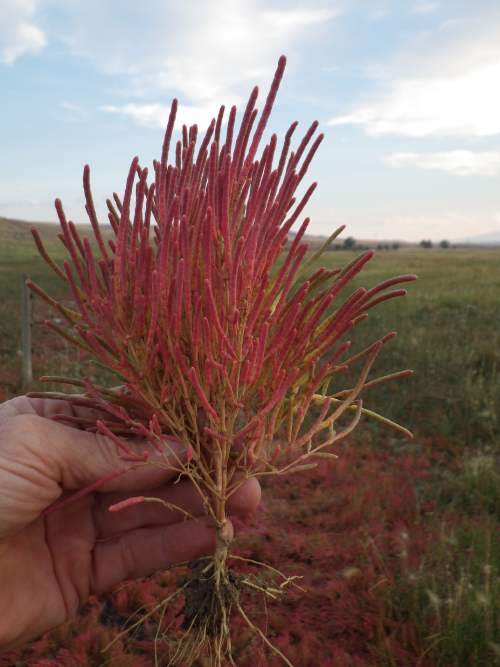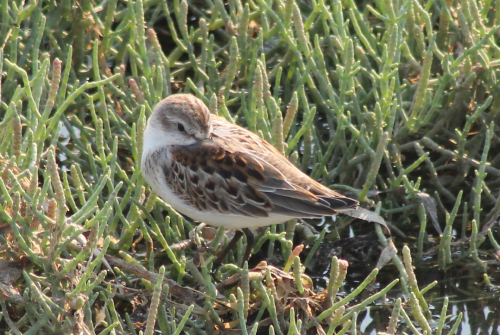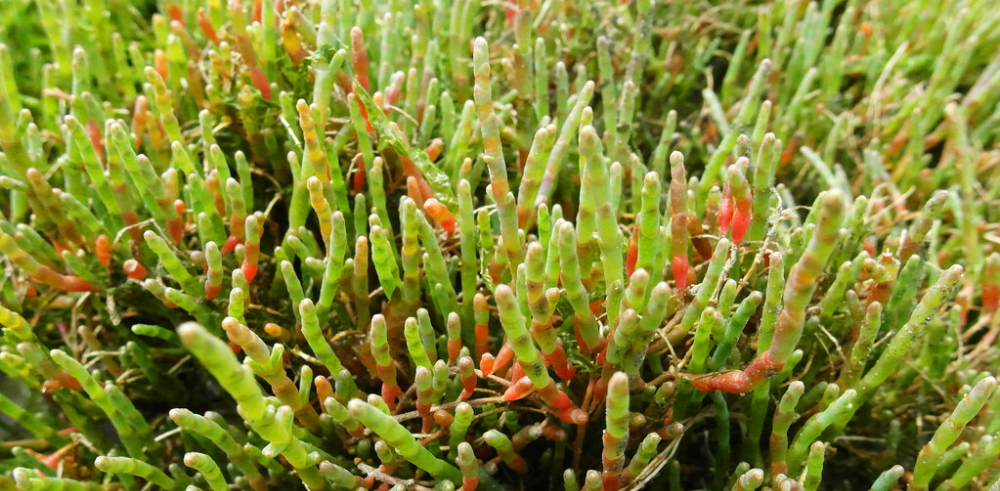Welcome back to the marsh!
Today, we will be talking about an interesting plant that inhabits salt marshes and can be eaten. Saltwort, Salicornia virginica, is a flowering, succulent plant in the Amaranth family that can be found along the upper reaches of tidal marshes a special and localized habitat that is becoming increasingly imperiled with sea level rise. Saltwort resembles a clump of pickles growing close to the ground, with fleshy highly adapted green leaves that resemble lobes. They can be picked and nibbled on, with a salty taste revealing that they have special glands allowing them to take in salt water to live and grow. In fact, these plants can be gathered and pickled!


Salicornia virginica is one of the plants found in the Salicornia species and is not seaweed. These plants are native to North America, Europe, South Africa, and South Asia. Salicornia virginica specifically can be found in North American – from Canada to Mexico on both coasts and is usually abundant in saltwater marshes. Although we refer to them here as Saltwort, or Sea Bean, they could also be called glasswort, pickleweed, picklegrass, sea asparagus, and marsh samphire. Remember common names can often refer to several different plants depending on your region, so make sure the description of the plant meets Salicornia – especially if you plan to eat it!
The Salicornia species are small annual herbs. They grow branched stems that look succulent, hairless, and jointed. Many species are green, but turn red in the fall.
Chef and forager Hank Shaw has created this “pickled sea bean” recipe for The Splendid Table.
Sharon Palmer also shares tips for cooking with sea bean.
Identify and cook sea bean with Eat The Planet – Exploring Earth’s Forgotten Edibles.
Saltwort is a numerous and common plant, but please make sure that any you gather does not come from a nature preserve or protected site such as a Wildlife Management Area. Engaging in environmentally friendly practices and ensuring that the water quality of the James River continues to improve will mean that this interesting plant will continue to grow in our local marshes for many years to come.

